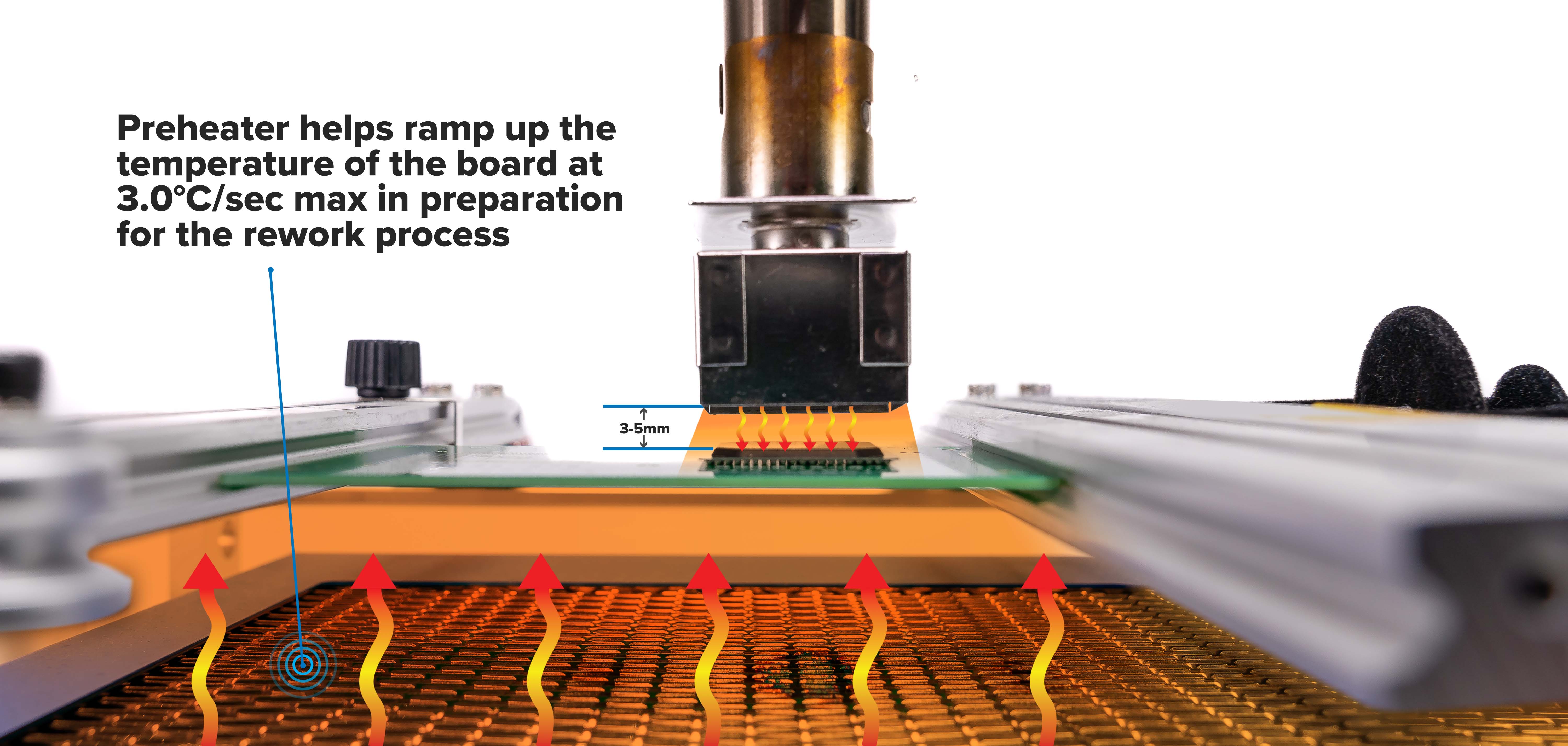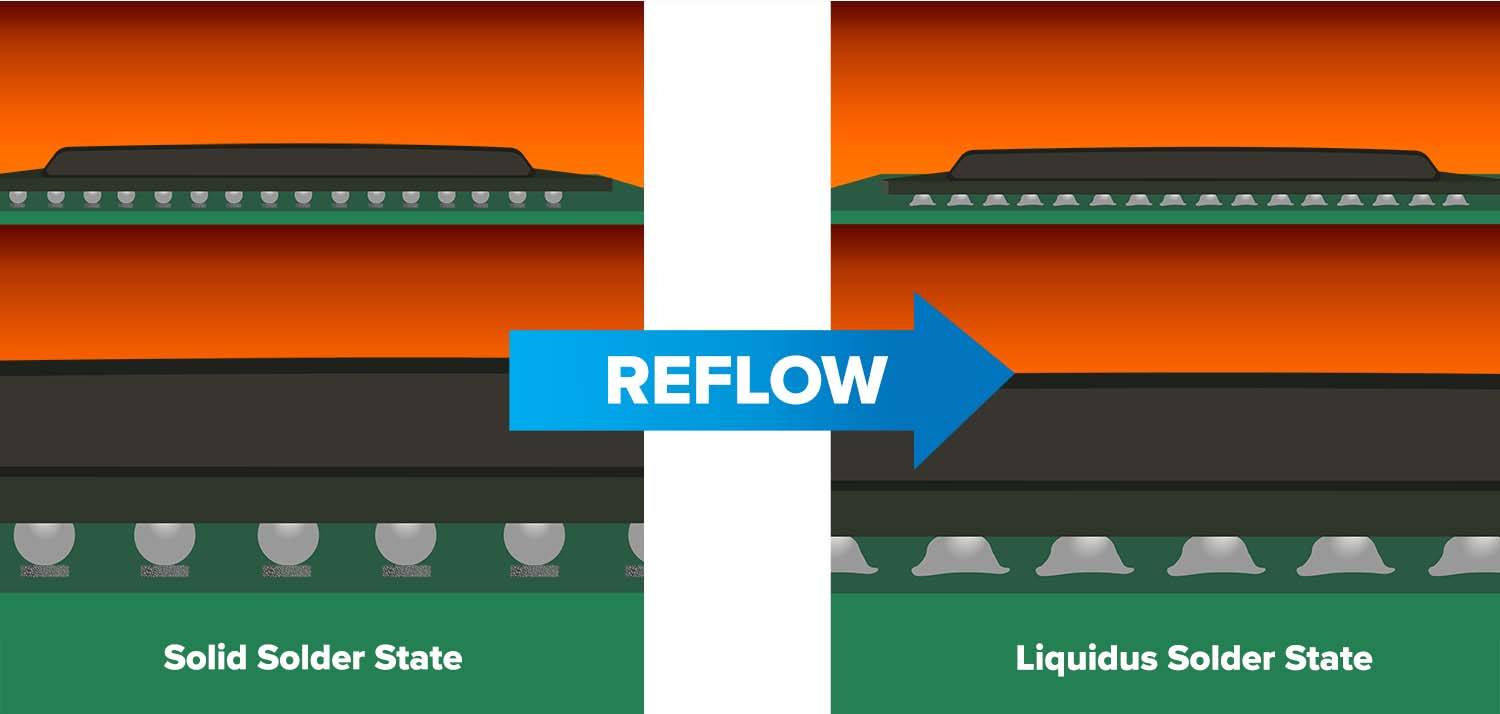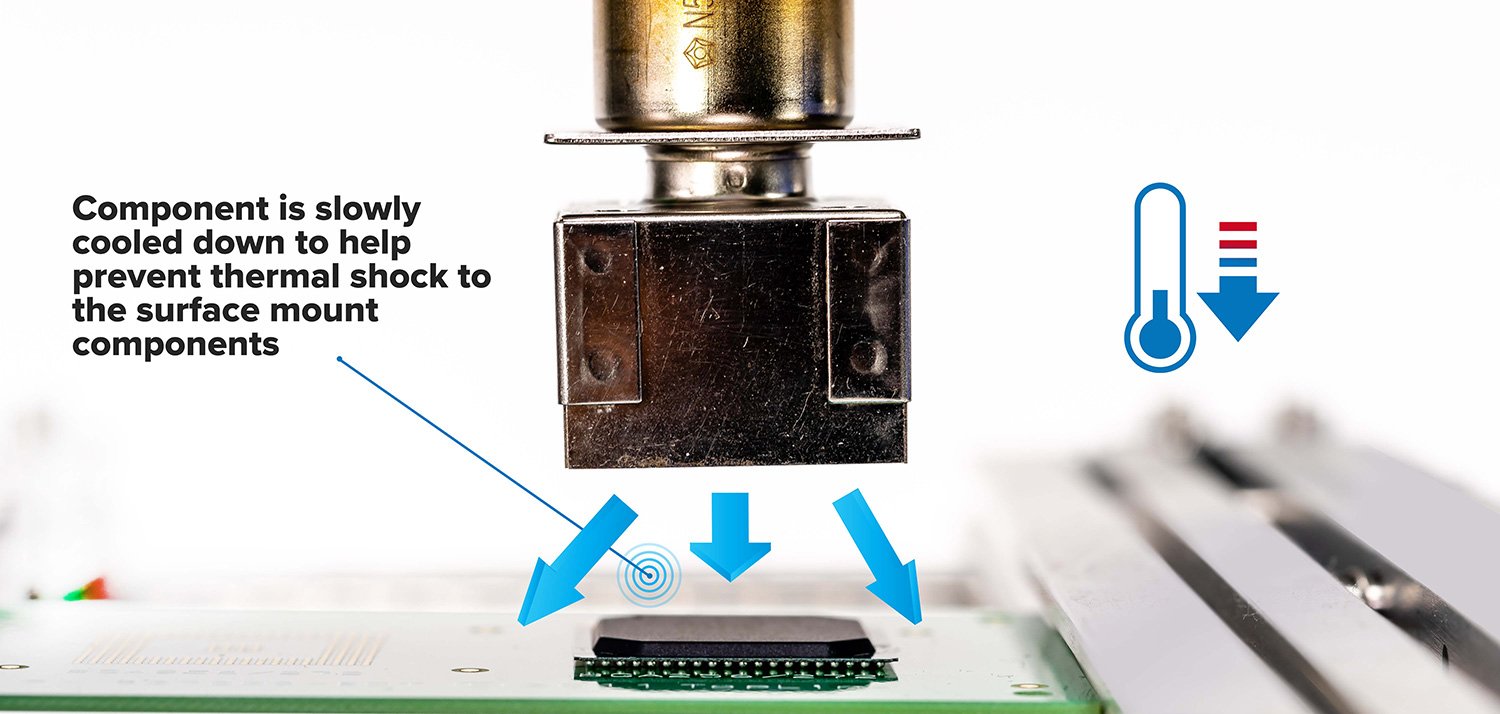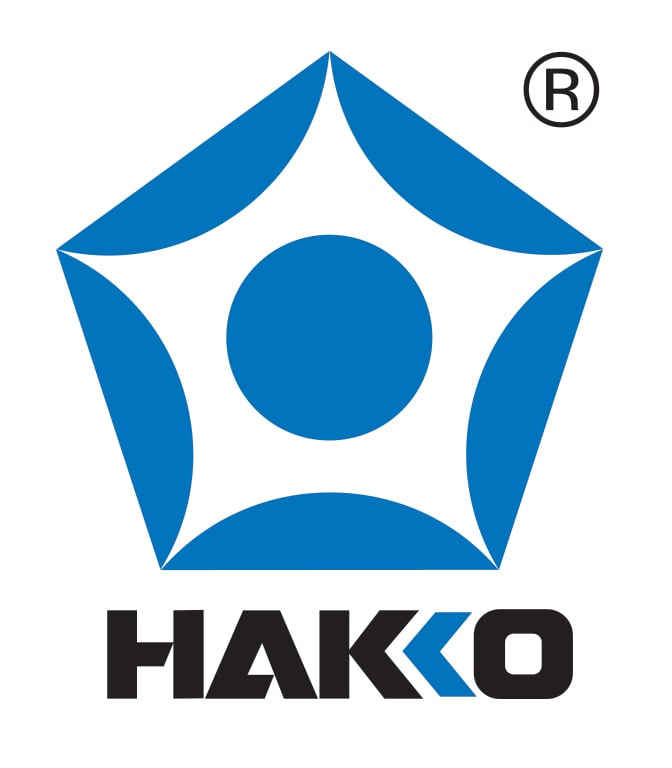We use cookies to make your experience better. To comply with the new e-Privacy directive, we need to ask for your consent to set the cookies. Learn more.
The Four Stages of Hot Air Rework

Rework is the term used for the repair of electronics which typically involves desoldering and re-soldering of surface-mounted electronic components. There can be several reasons why rework is necessary, anything from poor solder joints to misplaced components.
SMD rework usually requires reflow of all solder on the surface mount components. This process needs controlled heat to avoid damaging the target component as well as the surrounding components and the PCB. Hot air stations and board preheaters are the most commonly used tools for rework.
A quality hot air station will be able to control the temperature and airflow being applied to the board while creating a thermal profile. A thermal profile is normally categorized into four stages, Preheat, Soak, Reflow, and Cooling, and depending on the application, additional stages can be added.

1. PREHEAT: First Stage of the Thermal Profile

In the preheat stage, the temperature of the board and component are ramped up in preparation for the rework process. A preheater may also be used to assist in this process. The preheat temperature ramp-up rate should be controlled to protect sensitive components. A ramp up rate of 3.0°C/second is the recommended maximum ramp up rate, but one should always verify based on manufacturer datasheet. Monitoring the temperature with a thermocouple will come in handy which can be found on HAKKO preheaters. We covered HAKKO’s preheaters more in depth in a recent Hakko Tips article which you can read here.
2. SOAK: Second Stage of the Thermal Profile

The second stage of the rework process is the SOAK. This is a slow process which allows for the heat to soak into the component and board at a controlled pace. In this stage, most of the flux activates helping remove oxidation from the component leads and pads. If the temperature is raised too rapidly it can cause thermal shock to the component and PCB which can lead to defects and microcracks. Again, a ramp up rate of 3.0°C/second is recommended to avoid damaging the components, but one should always refer back to the manufacturer data sheet.
3. REFLOW: Third Stage of the Thermal Profile

To achieve proper reflow, the component needs to be heated to a target temperature which is above the solder melting point. For Tin-Lead (Sn63Pb37) solder, the melting point is 183.0°C, while for Lead-Free solder (SAC305) the melting point is 217.0°C. So anything above these temperature points will put the solder around the component into a liquidus state and it’ll need to remain in this liquidus state for a period of time. This is referred to as “Time Above Liquidus” which will vary and should be determined based on manufacturer specifications.
4. COOLING: Fourth Stage of the Thermal Profile

In this final stage, the component is slowly cooled down to help prevent thermal shock to the component. This will also help to extend the life of the heating element inside of your hot air tool. Slowly allowing the components and PCB cool down allows the solder to solidify without error.
Again, these stages can be subject to change always depending on your application but should always follow this order. The Hakko FR811-SET is a great SMD rework system which comes with all of the necessary tools such as board holder, board preheater, hot air station, and grip holder to make your rework procedure easier, so make sure you check it out here.
For more information visit us at www.HakkoUSA.com you can contact us at 1-800-88-HAKKO (42556) or email us at [email protected].
-HakkoUSA
